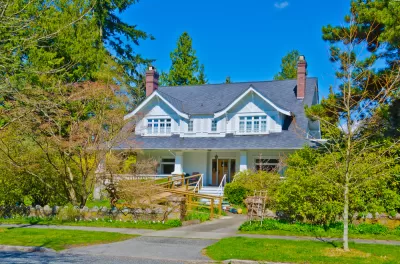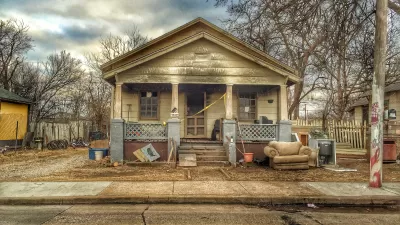U.S. home values appreciated sharply during the pandemic, particularly in communities of color, where prices rose by as much as 10.3%.

Thanks to "historically low interest rates, strong demand, and the tightest supply conditions seen in 40 years," home prices "rose significantly" across the United States over the last year. "From December 2019 to 2020, nominal home values increased in 92 percent of the 30,000 zip codes tracked by Zillow (which contain 99 percent of the nation’s population)." This growth, write Alexander Hermann and Thomas Shay Hill in Housing Perspectives, was particularly pronounced in communities of color, where home value growth "outpaced less diverse zip codes."
According to research conducted by Hermann and Hill, "Typical home values in December rose 9.3 percent on average in communities of color—including 10.3 percent in zip codes where a majority of the population is Black—compared with 6.6 percent in neighborhoods where at least 90 percent of the population is white." In major cities, these neighborhoods "tend to have higher-than-average population densities, lower median incomes, lower home values, and a lower rate of homeownership than the metro area as a whole," characteristics which correlate with home price growth.
Yet "[d]espite faster average growth, home prices continued to decline in a disproportionate share of these zip codes. Looking ahead, both stagnating home prices and extreme price volatility might compound the challenges faced by communities of color, and Black communities in particular, in building wealth."
FULL STORY: Home Prices Rose Fastest in Communities of Color During the Pandemic

Maui's Vacation Rental Debate Turns Ugly
Verbal attacks, misinformation campaigns and fistfights plague a high-stakes debate to convert thousands of vacation rentals into long-term housing.

Planetizen Federal Action Tracker
A weekly monitor of how Trump’s orders and actions are impacting planners and planning in America.

In Urban Planning, AI Prompting Could be the New Design Thinking
Creativity has long been key to great urban design. What if we see AI as our new creative partner?

Portland Raises Parking Fees to Pay for Street Maintenance
The city is struggling to bridge a massive budget gap at the Bureau of Transportation, which largely depleted its reserves during the Civd-19 pandemic.

Spokane Mayor Introduces Housing Reforms Package
Mayor Lisa Brown’s proposals include deferring or waiving some development fees to encourage more affordable housing development.

Houston Mayor Kills Another Bike Lane
The mayor rejected a proposed bike lane in the Montrose district in keeping with his pledge to maintain car lanes.
Urban Design for Planners 1: Software Tools
This six-course series explores essential urban design concepts using open source software and equips planners with the tools they need to participate fully in the urban design process.
Planning for Universal Design
Learn the tools for implementing Universal Design in planning regulations.
Gallatin County Department of Planning & Community Development
Heyer Gruel & Associates PA
JM Goldson LLC
City of Camden Redevelopment Agency
City of Astoria
Transportation Research & Education Center (TREC) at Portland State University
Jefferson Parish Government
Camden Redevelopment Agency
City of Claremont





























